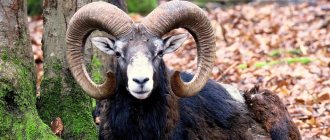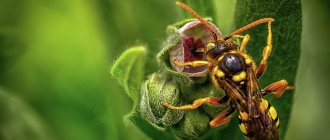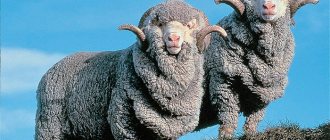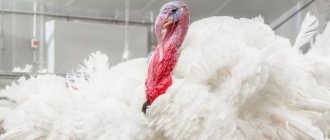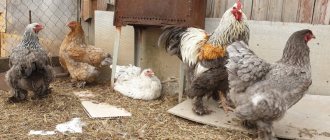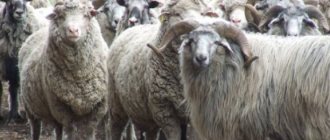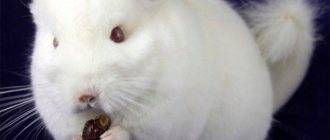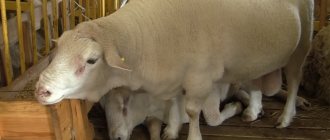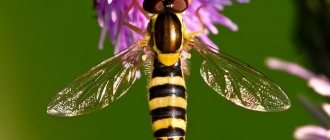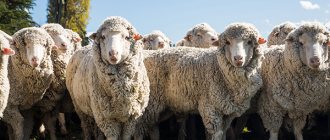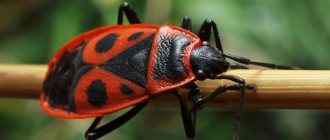Origin
Fat-tailed sheep were first mentioned in the 3rd millennium BC. All evidence of the presence of such animals was found in Asian countries, while in Europe at that time there were simply no meat-and-fat animals. Experts explain this by the poor feed resources inherent in the states of the Central Asian region.
The main feeding grounds were pastures with sparse and nutrient-poor vegetation, so animals were selected in such a way that on this poor food they could gain weight and store fat.
In addition to these factors, an important reason for the popularity of fat-tailed animals in this region was the lard they produced, which made it possible to preserve the resulting meat in hot climates. This was especially appreciated by nomadic peoples.
Since its appearance, the distribution area of the fat-tailed varieties has not increased much. This is explained by the specificity of such sheep breeds and the differences in cultures and mentalities of different regions of the world.
Meat-fat types of sheep were and are reluctantly bred both in Russia and in other European countries. This is due to the low fertility of such animals and differences in the gastronomic tastes of the populations of Europe and Asia.
Now experts are making attempts to increase the number of tallow animals, but so far they have not achieved much success.
As it turned out, fat-tailed breeds are poorly suited for intensive methods of modern farming and many modern technologies are not applicable to them.
What diseases do sheep suffer from and the fight against parasites?
Sheep can become ill when exposed to damp or cold conditions for long periods of time . In this case, they may develop pneumonia. Sheep begin to cough, appetite decreases, and breathing becomes difficult.
Body temperature rises to 42-44 degrees. Treatment is with antibiotics (Biovit 80, bicillin, streptomycin). It is necessary to protect the flock, especially in winter, from drafts, and keep the animals warm and dry.
What is different about a fat-tailed ram?
Photo:
The main distinguishing feature of fat-tailed sheep is the fat sac located in the sacral region.
This bag is called fat tail, which is where the name of the animals and the entire direction of the species comes from. The fat tail is a storehouse of nutrients, fat, and moisture.
When suddenly difficulties arise in obtaining food or water, the animal uses up these reserve elements in order to survive.
Interesting! Fat-tailed sheep are often compared to camels, which use their hump to “storage” water and nutrients.
The size and weight of the fat tail can be completely different - small, medium, large. Of course, the goal of every breeder is to get the maximum fat tail, and that is, a large fat tail, weighing 15-20 kg.
But such masses are quite rare and only in favorable conditions; most often the weight of the fat tail varies between 5-10 kg.
Compound
Not all types of fat tail fat are equally healthy. The qualities depend not only on the breed of sheep, but also on the gender of the livestock.
In young sheep, fat tail fat has the following composition:
- Monounsaturated, polyunsaturated and saturated fats - 97%.
- Water - 0.3%.
- Vitamins, mainly group B, but D and E are also present, PP - 2%.
- Cholesterol belonging to the “good” type. This type of cholesterol is important for the body, as it promotes brain activity and improves cell regeneration. The cholesterol content in fat tail fat is 2 times lower than in beef and 4 times lower than in pork.
- Microelements: selenium, chlorine, phosphorus, sulfur, zinc, magnesium, iodine.
- Beta-carotene and natural lanolin. The last element makes fat tail fat the most valuable for cosmetology.
- Acids: stearic, margaric, palmitic, pentadecanoic, myristic, lauric and capric.
- Omega-6 and omega-3, which are necessary to strengthen blood vessels.
Description
There are many breeds of fat-tailed sheep, each of which has its own physique, character, advantages and some disadvantages.
But if you compare not different fat-tailed breeds, but fat-tailed sheep with wool and meat sheep, then you can find certain external features of these animals:
- Fat-tailed sheep are always large. The height of a ram at the withers is about 110 cm, and that of a sheep is 75-90 cm.
- The weight of the animal can range from 60 kg (female) to 150 kg (males).
- The head is narrow and small with a hump on the nose.
- The ears are long and usually hang down.
- horns , but there are exceptions.
- All representatives of the species have a fat tail
- The fat-tailed ram has a tail of medium length, about 9-10 cm.
- The coat is thick, but always coarse, hard and short, there is no fluff.
- Color depends on the breed. Most often there are red ones, less often – brown, dark brown, black, gray, white individuals.
Where did fat-tailed sheep breeds come from?
This breed appeared in hot and arid Asia several centuries, and possibly several dozen centuries ago. Scientists still do not agree on whether fat-tailed animals were bred on purpose or by accident. Representatives of this species received their name due to the weighty bag of fat called the fat tail. It is located on the back of the body; it can reach the legs in various ways.
The fat tail contains reserves:
- vitamins;
- minerals;
- water.
The use of these reserves occurs if nutrition does not allow maintaining the optimal state of the body. This often happens during hot, dry summers and long winters in the absence of pasture. The weight of the fat sac can reach more than 30 kg with proper feeding.
These individuals are currently grazed in the Crimea and the North Caucasus, as well as in the steppe regions of Russia and Kazakhstan. All animals of this species are called fat-tailed due to the impressive deposits of fat on the tail.
Fat-tailed sheep, photos of which can be seen on the website, have strong long legs and a fairly powerful torso. As a rule, there are no horns, but individuals with small horns, mostly males, can be found. The head is slightly elongated, narrow and small. There is a hump on the nose and drooping ears. Females weigh about 60-70 kg, males - 70-80. However, much larger sheep are also found.
The wool is quite thick and tough, varies in color. There are colors of red, brown, gray and black. An individual can be painted in only one color; two or more colors are not found.
Breeds
In the southern countries where fat-tailed sheep are bred there are many popular breeds. They have certain species characteristics and breed characteristics that set them apart.
Gissar breed of sheep
Most often found in Uzbekistan and Tajikistan. The average weight of a female is 89.9 kg, and a male is up to 150 kg. Only young individuals are slaughtered.
The animals are dark red in color and have coarse fur. Trimmed within 1.9 kg.
Edilbaevsky sheep
They have strong bones and a strong immune system. Females weigh up to 60 kg, males – up to 120 kg. The coat color is most often black or red. The clipping is about 3 kg per individual. Young animals have a pleasant taste, tender meat.
Females are capable of producing up to 110 liters of high-fat milk during the lactation period. Distributed mostly in Tatarstan, Bashkiria, Kazakhstan, Saratov region of Russia.
Interesting! Black Edilbaev rams and sheep have the largest tails and an abundance of wool, unlike the red representatives of the breed.
Kalmyk fat-tailed sheep
Bred in China and Mongolia. The weight of a ram is within 115 kg, of a female – 75 kg. They have excellent quality meat and relatively soft wool.
At the same time, the softest fleece is produced by animals of white and black color. Approximately cut to 3.9 kg.
Sarajin ram
Bred in Turkmenistan. Males weigh up to 90 kg, females - up to 60 kg. The fat tail has a mass of 6-7 kg. These sheep produce good fleece, the shearing amount is 2-3 kg/individual. Animals that have reached weight are allowed to be slaughtered.
Factors affecting lamb weight
There are several factors that can have a strong impact on the weight of a ram:
- Breed . If you breed sheep for the purpose of producing meat, then immediately purchase livestock of meat breeds. For example, if you buy Huesalan sheep, you will not be able to get the desired meat and lard from them, since their average weight is only 18 kilograms. The record holders for gaining meat and fat mass are meat-fat breeds.
- Age . A ram is completely ready for slaughter at the age of 3-4 years. It is during this period that he gains his maximum mass. But a four-month-old lamb is also ready for slaughter, but its weight will not exceed 30 kilograms.
- Floor . Males always weigh more than females.
- Conditions of keeping and feeding . Sheep are not the most fastidious animals and are able to feed on hay alone, but adequate nutrition directly affects carcass weight and meat quality.
Productivity
sheep
have very good productivity. The animal is valued for many qualities, which is why it is in great demand in hot countries.
Fat tail is the main value obtained from the animal. In countries where fat-tailed breeds have been bred for centuries, this fat sac is highly valued for many reasons.
It is used in many industries, medicine, cosmetology, and cooking. In addition to the fat tail, wool is also obtained from rams and sheep. But since it is very rough, it is unprofitable to put it into mass production (too much waste and low quality of the resulting threads).
As a rule, felt products, rugs, blankets, felt boots, carpets and similar things are made from the wool of these animals.
The fat-tailed sheep produces a lot of meat. It has a pleasant taste, soft and tender, but most importantly, it is very expensive. The texture of the meat depends on the age of the animal - the younger the better.
Gaining muscle mass occurs quickly. Already at 6 months the ram weighs approximately 60 kg.
Important! Fat-tailed sheep can be kept on pastures around the clock, so in terms of feeding they are very profitable - the main thing is to find good pasture!
Dairy sheep can provide the breeder with a lot of good milk.
The fact is that from the first days of life, young animals can eat pasture in addition to milk, so a certain amount of milk (up to 50 liters) can be collected from sheep and sold or used for processing (cottage cheese, cheese, butter, fermented milk products).
Another method of earning money when breeding fat-tailed rams is mating. Not every herd has a good stud ram.
As a rule, these are the largest, healthiest and strongest individuals. They are in high demand, so you can bring together animals from different herds and make a profit from it.
Keeping sheep in the summer season
In the summer season it is possible to carry out grazing. Fresh grass is the basis of the diet for animals.
Pastures are distinguished:
- artificial (grasses are sown by the farmer himself);
- natural (grass grows in the usual way).
It is important to remember that some breeds are difficult to switch from a winter to a summer diet, and the farmer must change the feed gradually. Not all types of grass are suitable for feeding sheep, so the animals may have problems digesting the food.
The contents suggest that grazing should be carried out according to a schedule - in the morning at 5-6 and 8-9 o'clock. Constant keeping in stalls is intended only for meat breeds.
Advantages and disadvantages
Fat-tailed sheep, like any other animals, have a number of characteristic features and characteristics. Some of them are positive, while others, on the contrary, are negative.
One way or another, before you get such animals, you should familiarize yourself with all their pros and cons.
Thus, the advantages of fat-tailed animals usually include the following characteristics:
- High level of endurance - livestock breeders, scientists, and veterinarians report that animals can overcome enormous distances (up to 500 kilometers);
- Unpretentiousness in care - keeping rams and sheep does not require a lot of effort on the part of humans;
- The ability to quickly gain weight is beneficial for slaughter;
- The ability to withstand hunger thanks to the fat tail;
- Easy and quick birth – important for breeding;
- A large amount of wool that can be obtained from each individual;
- A person can use several animal derivatives at once: meat, lard, milk.
However, despite such a variety of positive features, there are also some disadvantages.
Among them are usually distinguished:
- helplessness;
- impossibility of independent existence;
- the need to constantly be in the herd.
In this way, you can be convinced that animals have much more positive traits than negative ones. That is why they have won such great love among livestock farmers around the world.
How to choose a fat tail when purchasing
A high-quality product is the key to a good dish: it is natural fat tail that will bring maximum benefits to the human body. To choose the right raw materials, you should consider some recommendations:
- A good fat tail has a specific but pleasant smell. Only a stale or spoiled product can smell like stale meat or ammonia;
- In order not to confuse fat tail with interior fat, you need to pay attention to its consistency. The first melts even at room temperature, resembling a thick cream, while the second is harder and less healthy, and can only be melted in a steam bath;
- The color should be milky white, with possible yellowing. Saturated gray and greenish shades indicate improper storage;
- To avoid harm typical of animal raw materials, it is better to make sure that the seller of the product has a veterinary certificate about the health status of the livestock.
Content
In order for your fat-tailed rams and sheep to have the opportunity to grow and develop properly, and, as a result, bring you benefit and profit, it is necessary to observe certain conditions for their maintenance.
First of all, it is necessary to take care of the presence of a large and spacious area that will serve as a pasture. This is necessary due to the fact that animals must spend the main period of time outdoors, free grazing.
It should be taken into account that forests and swamps will not be able to play the role of pasture, which is due to the high acid content in the pasture.
If animals regularly eat such food, then poisoning will inevitably occur in their body. To make grazing as convenient as possible, it is necessary to provide your herd with security and a leader.
If we talk about approximate periods, grazing is considered optimal for 200 days a year. The rest of the time (during winter) you need to take care of creating a dry shed.
Pay special attention to humidity levels and temperature conditions. If you keep fat-tailed animals (both adults and lambs) in a cold and damp room, then there is a high probability of developing colds.
To avoid various kinds of ailments, especially infectious ones, you need to regularly (2 times a year) give your animals vaccinations specifically designed for prevention.
In addition, do not forget to periodically show your sheep and rams to the veterinarian.
Another necessary activity is wool processing. Treatment is intended primarily to protect animals from parasites.
Shampoos, sprays and other preparations are used as disinfectants. Also, do not forget to worm your animals.
The diet of animals deserves special attention. In general, they are quite picky about food, however, fat-tailed animals should be fed with simple, but high-quality food.
For two hundred days a year, during which animals graze, there is no need to worry about food - sheep and rams eat pasture. Despite this, it is necessary to maintain the water balance of animals by providing them with free access to a large amount of water.
In winter, when grazing is not carried out, domestic animals need to be fed hay and grain. It is believed that the daily norm for one individual is approximately half a kilogram of grain and 2 kilograms of hay. In addition, vegetables and root vegetables should be included in the diet.
Growing
The peculiarity of the mountain breed of animals is their unpretentiousness in food. In addition, keeping sheep does not require any major outbuildings. Some farmers keep animals under a regular canopy, which can protect the flock from precipitation and cold. The main point regarding the maintenance of hissars will be free grazing, since the peculiarity of fat-tailed animals is a nomadic lifestyle.
If sheep are sometimes kept indoors, the breeder will need to provide good ventilation inside. This is due to the release of a large amount of heat by the animals themselves. Poor air circulation will cause the sheep's wool to become damp, which will negatively affect the well-being of the animals. Animal sheds will need to be regularly cleared of excrement, as well as disinfected annually.
Care
Keeping hissars involves caring for their limbs. Hoof trimming is not necessary, but daily exercise is required. Otherwise, the blood supply to the hooves will be disrupted, which will lead to illness and weakness of the animal. With weak immunity and increased dampness, hooves can rot. Therefore, the breeder should monitor the condition of the limbs of his sheep.
In addition to regular and long walks, sheep will need a dry and clean bed, especially for the ewes and young offspring. For animals, bedding is made from vines or dry hay. Caring for hissars requires shearing and disinfection of the entire livestock. Typically, such events are held once every six months: in May and September.
Sheep can be sheared for the first time when they reach five months of age. However, the temperature outside should not be lower than +15°C. It is not recommended to feed the animal 12 hours before the planned haircut. For work, a machine or scissors are used; at the end of the procedure, the sheep is treated with an antiseptic.
Nutrition
An important condition regarding the diet of sheep is the fortification of food and constant access to water. Gissars can be fed hay and cereals even in the winter months. To avoid a deficiency of micro- and macroelements, animals are offered mineral-containing slimes, which are placed near drinking bowls. This breed can be fed food waste, such as peelings from root vegetables, vegetables or fruits. And also sheep and rams of the Gissar breed eat bread well.
It is recommended to place food of different types, if the animals are not out for a walk, in special feeders. They should be above ground level to prevent animals from trampling or overturning food containers. As for hay, feeders for it should be placed even higher.
For hissars, pastures are a place to search for food all year round. Usually, in the warm season, flocks of sheep graze in the foothills, and with the arrival of winter, the animals move to the mountainous part, where there is not much snow. If there is fresh grass, then the sheep will not need additional nutrition. In winter, pasture should be replaced with hay. The optimal amount of hay for one individual will be 1.5–2 kg.
In addition, it is recommended to add about 500–600 g of crushed grain to the diet. The rock is positive for corn silage. Sheep also need to be given salt to replenish their mineral reserves. For one individual, the daily requirement of table salt will be 10 g.
For better absorption of food, the diet of sheep must be mixed, so roughage must be alternated with succulent feed. The last type of food is best given to animals in the first half of the day along with water. With free grazing, there is a possibility that animals will experience nutritional deficiencies. This is especially true on poor pastures. In this case, the sheep are supplemented with grain; the daily norm for one animal will be 300–400 g of grain.
Breeding
Breeding fat-tailed sheep can become quite a profitable business. However, before you start organizing your own business and purchasing animals, you should familiarize yourself with the features and rules of their breeding.
First of all, you need to understand that in order for such an activity to make sense and be profitable, you need to purchase a livestock that will consist of at least 12 animals.
This is justified by the fact that 1-2 rams will not bring you enough fat, milk or wool, but at the same time they will have to be properly cared for. That is why it is believed that it is much more profitable to purchase a small herd at once.
In order to begin direct breeding, you need to wait until the fat-tailed females reach sexual maturity. This usually occurs at 5-8 months of the animal’s life.
In general, the mating process can be carried out at any time, however, late autumn is considered the most favorable period.
If you plan to perform artificial insemination, it is recommended to carry it out during the same season.
Your herd of fat-tailed sheep should contain several males at the same time, who will serve as a producer.
The ideal option is a situation where you have a pair of main males on your property, as well as several spare males.
The pregnancy process in fat-tailed sheep lasts about 5 months, and the birth itself occurs quite quickly - the maximum duration is 60 minutes.
From 1 to 5 lambs can be born at a time, but the latter case is more an exception and rarity than the rule.
After the lamb is born, some mandatory procedures must be carried out.
You immediately need to clean his nose and mouth (mucus usually accumulates in these places), and if necessary, you need to puncture the amniotic sac. After this, the baby is returned to the mother, placed next to the nipple.
Not only the mother, but also any other uterus can feed a newly born lamb. This is important if a sheep has given birth to several babies at once, but does not have the ability to provide milk for all of them.
General benefits of fat tail fat
It's not just Central Asians who benefit from the beneficial properties of sheep turtles.
For many years, representatives of different nations have used this fat in traditional medicine recipes to treat many diseases, especially colds. Pork fat is also used for this purpose. Fat tail fat is also successfully used to treat respiratory diseases such as tracheitis, bronchitis and pneumonia. This is due to the fact that the substance facilitates the removal of sticky mucus and immediately has an anti-inflammatory effect. Disorders of fat metabolism and fatty liver are also a signal for internal treatment with sheep fat.
Due to its priceless taste, lamb fat is used in the culinary, medical and cosmetic industries. Let's take a look at what makes this product so useful.
For men
Fat tail fat also has a beneficial effect on the male body. A small amount of the substance added to the daily diet normalizes cholesterol levels and increases potency. In addition, it normalizes intestinal function.
If a man is involved in sports that require a lot of energy, it is also recommended to use high-calorie fat tail fat to replenish his strength. It is necessary to include a small piece of product in your daily diet that will help you adapt to physical activity and replenish your strength.
In addition, daily consumption of the product will improve memory and help you concentrate. It is equally important that lamb improves blood circulation in the brain.
To eliminate vision problems and improve immunity, it is also useful to use the product. This is due to the fact that the presence of vitamin A maintains the balance of proteins and fats at a natural level, and the presence of beta-carotene allows the product to be completely absorbed, unlike other synthetic type analogues.
For women
Fat tail fat is effective for the fair sex, as it has a beneficial effect on hormonal levels, restores and establishes the synthesis of hormones important for the female body, and increases the ability to conceive. In addition, it is recommended to use the product during menopause. This is due to the fact that lamb, thanks to the large number of active biological ingredients in its composition, is considered a source of vitality and energy, which is used by the body to generate heat and thermoregulation, supporting all necessary processes.
Lamb can also provide processes such as the formation and development of the structure of cell membranes, as well as their strengthening and protection from destruction and damage. Thanks to the antioxidant effect, the process of neutralizing free radicals occurs, which have a harmful effect on the body, accelerating the processes of tissue withering and oxidation, provoking cellular mutations. Thus, fat tail fat is an excellent anti-aging agent, as well as a way to prevent cancer.
During pregnancy
It is also beneficial to use small amounts of lamb during pregnancy. This will help fight your cold by minimizing the amount of medication you take.
It also has a beneficial effect on digestive processes due to its easy absorption. The product will improve immunity and prevent typical vitamin deficiency.
With a weakened nervous system, pregnant women will be protected due to the monounsaturated acids contained in the product, there will be a noticeable decrease in irritability and an increase in physical activity.
During feeding
Mothers with infants should take special care when consuming the product. Despite all the beneficial properties of the product, it can be harmful to the health and well-being of the child. As a rule, this is expressed by flatulence, colic, and stool disorders. Therefore, it is necessary to start using the product at the lowest dose while monitoring the child's response. If there are no negative signs, you can continue to introduce fat into your diet. However, if the child’s condition worsens at the slightest level, it is necessary to exclude the product from the menu.
For children
Fat tail fat is considered an easily digestible product and does not burden the digestive system, so it is often used to treat children.
It is strictly forbidden to consume fat before 9 months. But at the age of nine months, you can supplement the children's menu with this product if necessary. A negative reaction to a substance in a child may include vomiting, diarrhea, nausea, drowsiness and increased moodiness. In this case, it must be eliminated immediately.
For children, fat tail fat is most often used as a dishwashing liquid to treat respiratory diseases. Before such use, you should carefully examine the skin, which must be clean and intact, otherwise infection may enter the body.
Until the child reaches the age of one year, use such a compress only after consulting a doctor because the baby's skin is very sensitive, which can easily cause damage.
Before use, complete the following preparations:
- Prepare 100 g of fat tail fat and melt it in a water bath.
- Make a compress, which should consist of a gas bandage consisting of 4 layers, polyethylene, cotton wool and a bandage. Everything must be sterile clean.
Application of the compress consists of the following steps:
- Release the cheesecloth into the melted fat, then remove and squeeze lightly.
- Make sure the tampon is at an acceptable temperature and apply it to the part of the body that you want it to warm up.
- Place a layer of plastic on top of the gauze, followed by cotton wool.
- Secure the bandage.
It is important to remember that this heating method should not last more than 2 hours.
Children under 5 years old wash themselves. To do this, melted curdled fat is smoothly rubbed into the back and chest for 10 minutes. It is important to avoid the heart area. After 5 years he can study twice a day. The treatment method involves washing the back and chest area with melted fat. Then leave the used areas in a warm place for 3 hours.
What to cook from lamb tail?
There are many recipes for dishes with the addition of fat tail; the product can be salted, boiled, fried, cooked lula kebab, added instead of butter to vegetable and meat dishes, pilaf, and baked goods with meat.
Pickling
Before salting, the lard is washed and dried. You can leave it as a 1-1.5 kg piece or cut it into 3 cm thick plates.
A mixture for salting 1 kg of fat tail is prepared from: a head of garlic; 1 soup spoon of herbs; half a small spoon of curry; half a teaspoon of black pepper; 3 tbsp. l. salt; spices to taste.
When salting a piece, multiple punctures are made in it with a knife, which are filled with the mixture, and then the lard is rubbed on top. The piece is placed in a glass container, covered and left in the refrigerator for 3-5 days.
The chopped plates are rolled in spices, placed tightly in a bowl, covered, and left in the cold for 2-4 days.
Pickling
Marinated fat tail is prepared simply; for this, a piece is cut with an accordion and placed in boiling salted water.
After 30 minutes, take out the lard, cool it, coat it with salt, pepper, and garlic. After 2 hours, the product is placed in the refrigerator for a day.
Next, the fat tail is cut into small pieces and sprinkled with red pepper, after which it is ready to eat.
What to feed the sheep?
In summer, animals spend 80% of their time on pastures and eat grasses and succulent types of feed. Top dressing consists of corn silage and cereal hay.
Also included in the meal:
- vegetables (fresh, uncooked or frozen are used, since animals need vitamins);
- grain mixtures;
- salt;
- phosphate;
- bone flour;
- chalk (it can be given in pieces or finely ground and added to the feed mixture).
The salt norm for adults is 10-15 g per day, for lambs – 5-8 g. Chalk is a source of calcium (there should be no impurities).
In winter, in addition to hay, fresh vegetables should be given:
- carrots (young, fodder);
- beets (sugar, small size);
- beans (corn, peas - not frozen).
Sunflower cake and bran are also used. Water must be present without limitation.
Diet of queens
Queens (sheeps that have given birth) require high-quality feed that is balanced in all respects.
Daily meals consist of:
- hay – 500 g;
- legumes and straw – 0.5 kg;
- fresh vegetables - 3.5 kg.
Additionally, the diet should contain salt - 15 g. The amount of hay is reduced and replaced with mixed feed in the same amount 30 days before the appearance of the lambs.
After birth, hay is administered in an amount of 1 kg. There should be 4 kg of vegetables, 500 g of concentrated feed (this is required to increase milk in queens).
Diet of young animals
For the first 5 days, the lamb feeds on milk. Supplementary feeding is done as needed from a bottle, special mixtures are added (according to the weight of the animal). When the young animals reach 1 month of age, the food becomes more varied.
Concentrated food is introduced - 50 g. At 2 months, its amount increases to 150 g.
The use of fat tail in cosmetology and medicine
Fat-based products are used to rejuvenate, brighten the skin, and even out the tone. The product is effective in the treatment of colds, they make wraps, add 3 drops to herbal tea.
It gets rid of:
- diseases of the kidneys, liver, gall bladder;
- fights gastritis, ulcers, thrombophlebitis;
- restores potency.
Kurdyuk saturates the body with vitamins, acids, microelements, and normalizes blood sugar levels. It is part of the Dumi Dyat oil; its medicinal properties are not inferior to badger and bear fat. To use the fat, the fat tail is not salted.
Giant rams
The maximum weight of a ram that was recorded is 247 kilograms. Such a giant was shown to the world by one married couple who kept such a giant in Oregon (USA).
But there are only a few such rams in the world, and the real record holders among ordinary sheep are considered to be such breeds as the Gissar and Edilbaevskaya. In the former, the weight of an adult male is 170 kilograms, and in the latter, about 120 kilograms. But when cutting both the first and second breeds, too much fat comes out, so farmers prefer to breed the following species:
- Lincolns;
- Shropshires;
- Romney March;
- Hampshires;
- Kutums (Katym smooth-wool sheep).
Exterior Features
The fat-tailed breed of sheep was bred back in the 18th century. This breed was usually bred in Asian countries in hot climates. By crossing local fat-tailed sheep with other types, the following meat-fat breeds were developed:
- Gissar;
- edilbaevskaya;
- Kalmyk
The features of this type of sheep are considered to be strong bones and relatively long legs, which are a sign that these breeds can be driven over long distances. The body is stretched. The chest is wide and deep. The ears are long and drooping.
Natural-geographical zonality refers to semi-desert and desert areas. The maximum distance that fat-tailed sheep can travel is 500 km. Individuals of this type feel great in both desert and mountainous areas. At the same time, they can be on pastures all year round, even if the grazing is with sparse vegetation. They can be kept even in the most extreme conditions.
All these features are genetic, since for centuries fat-tailed sheep have had to adapt to their typical terrain. They received the very name “tail-tailed” due to the fatty deposits in the tail, or more precisely, in the rump, characteristic only of this type of sheep. Fat tail fat is like a camel's hump, which, under favorable conditions, accumulates in order to be used up during docile periods or when the grass on pastures is unfit for consumption. The shape and weight of fat deposits depends on the breed. These can be neat hemispheres concentrated in the tail, or in the form of a pillow that can hang right down to the ground. The weight of the fat tail ranges from 12 to 30 kg and depends on the breed, as well as the diet of the animal.
The fat-tailed breed of sheep cannot boast of high quality wool. In some breeds it is of higher quality (Edilbayevsky) and has fewer dead hairs. Gissar and Kalmyk sheep are usually used to make technical fiber. They cut their hair twice a year: in the spring-summer period and in the fall. Queens' clips do not exceed 2-2.5 kg. In rams this number can reach 4 kg. Autumn clipping is softer than summer clipping and is considered to be of higher quality.
The maximum weight of a fat-tailed sheep is 80-85 kg. This number is the same for all breeds of this type. The live weight of fat-tailed sheep reaches 130 kg, the minimum is 85-90 kg. One of the largest breeds of this species is considered to be the Gissar. Although the weight that an animal can reach varies not only depending on the breed, but also on the color. The color varieties of the fat tail breed are brown, black and red, as well as white (Kalmyk).
One of the main features of fat-tailed sheep is their precocity. They fatten up quickly and well. The daily growth of lamb up to 7 months is from 285 to 300 grams. Therefore, this type of sheep is considered highly productive. The weight of rams at seven months of age is about 47 kg. At the same time, the mass of the carcass at the exit is 24 kg. And tail fat in an individual of this age reaches 6 kg.
The fertility of fat-tailed sheep does not exceed 115 percent. Lambs are born weighing from 4 to 6 kg, and within six months they gain about 60% of the adult weight. Of course, this type of livestock is very profitable.
What products can you get?
Fat tail carriers are an excellent source of a lot of useful products:
- wool;
- meat;
- skin;
- milk;
- salo.
Wool can be coarse or semi-coarse and is used to make all kinds of products. From one individual per year, on average, you can get more than 2 kg of raw materials.
Meat, lard and milk are in great demand . In Asian countries, fat tail fat is a universal means for cooking. The skin can be used to make good, warm winter clothing.
Considering the unpretentiousness of keeping this breed and the large amount of useful products it produces, we can say with confidence that breeding such sheep is very profitable. You can consider both the option of building your own business and the option of providing your family with environmentally friendly products and materials.
Rules for mating, lambing and rearing of young animals
At five to eight months of age, sheep are ready to mate. If they are immature, they will not be allowed to mate. Usually there are one or more breeding rams in a herd. They are larger and stronger than their counterparts. If they are not available, artificial insemination is used. In the absence of complications, calving proceeds quickly. Lambs are born every ten minutes.
A two-day-old lamb can graze on its own
A newborn lamb should always clear mucus from its nose and then drink warm milk. If the mother does not have enough milk to feed the newborn calves, they are placed under another dam or artificially fed. With proper nutrition, the newborn gains weight well and by six months grows to approximately fifty to sixty kilograms.
From the second day of life, a newborn lamb is released to pasture. Breeding ewes of this species is usually not difficult. They are easy to feed, hardy and adapt well to various difficulties. They are happy with salt water if there is no fresh water.
